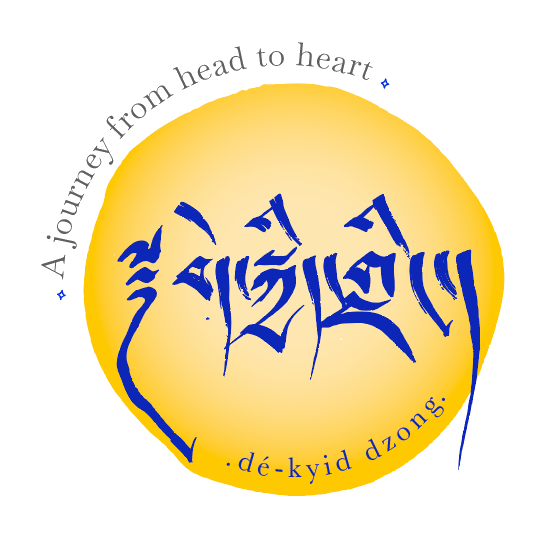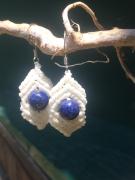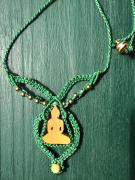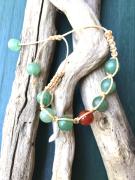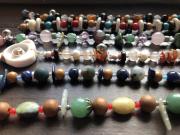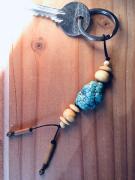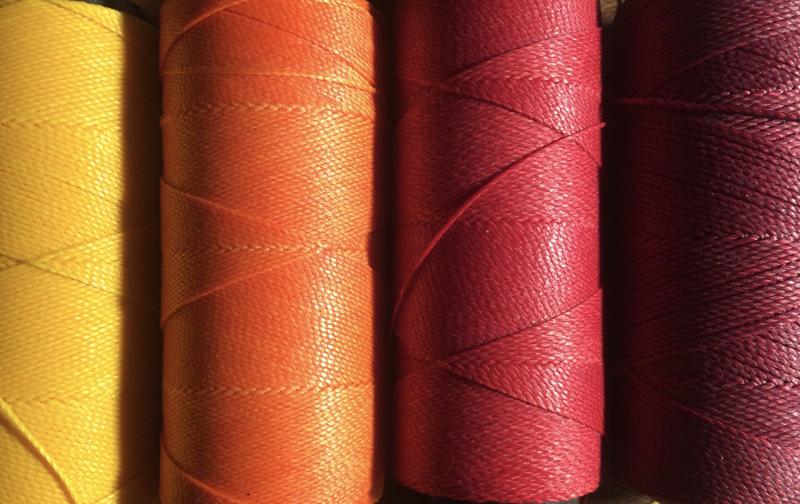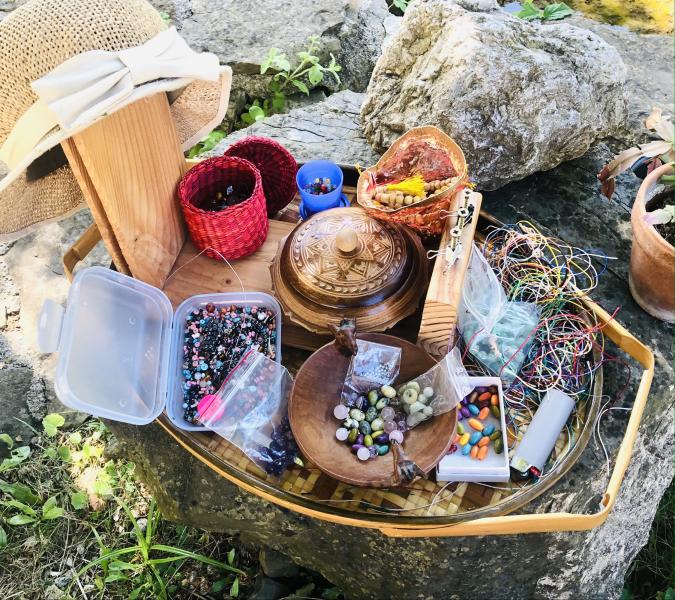The Art of Macramé
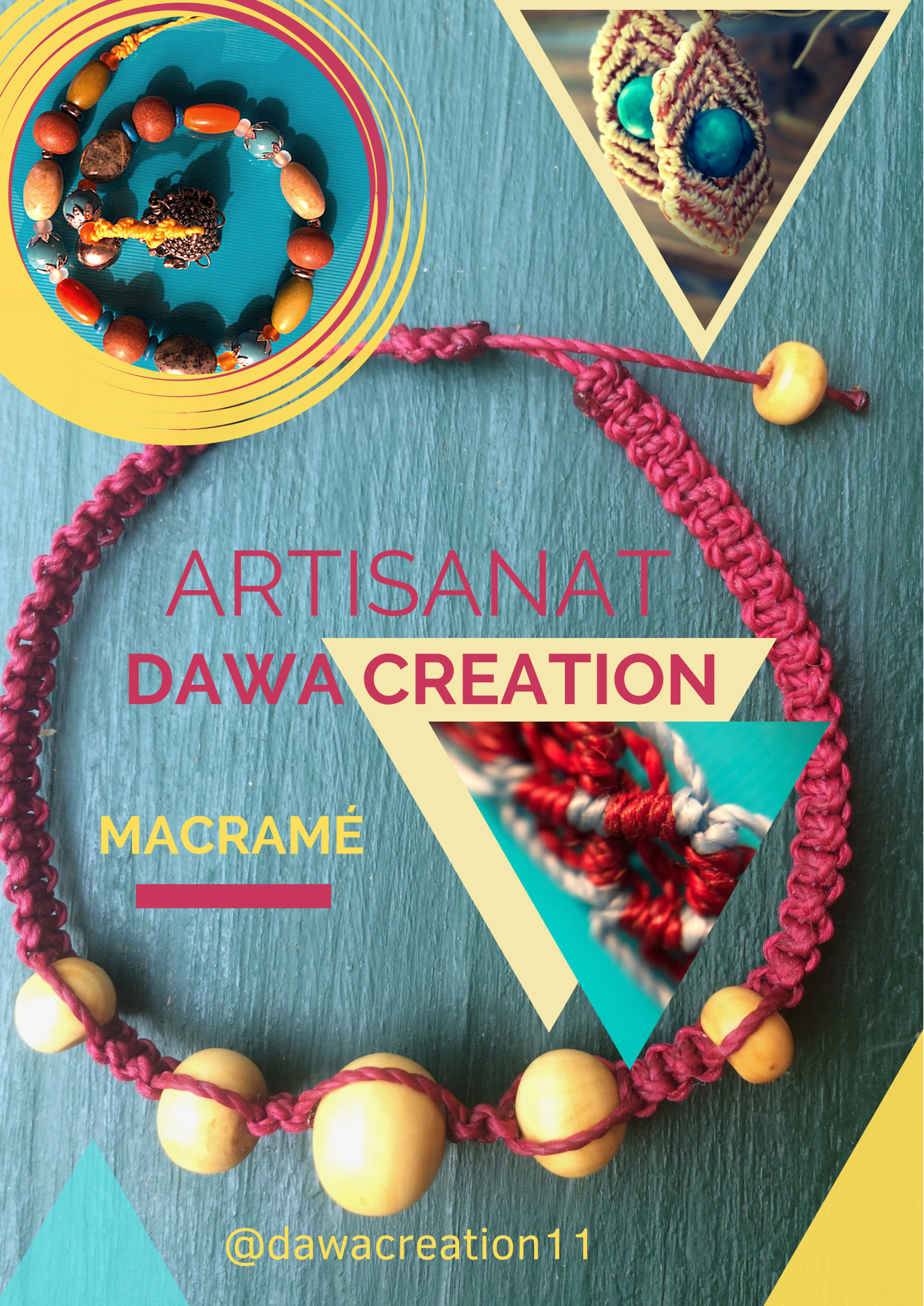
It all started at primary school, where I was taught how to make Brazilian bracelets from cotton thread. I got into the habit of creating, wearing and giving 'lucky' bracelets.
Then, during a trip to Brazil, I was drawn to micro-macramé in waxed thread. So I bought some materials there and got started, until one thing led to another and I've been making bracelets regularly for the last three years.
I live in a Buddhist community, at the Fourtou Tibetan Centre, where I have the chance to live in the heart of nature and learn to realise the nature of my mind. Having chosen to live in this setting of self-study dedicated to others, while sharing the well-being that reigns there, the idea of making jewellery that reflects this place became an obvious one.
The TNG® Centre - Theg-Chog Norbu Ling® - is located in the Corbières in the midst of the Cathar castles. The Orbieu River, which rises just a few kilometres away, runs through the middle of the site. The water is crystal-clear and ideal for purifying the stones.
Dawa Création represents the art of macramé, combining weaving with beads made from boxwood from the Aude region, sandalwood and rosewood from Nepal and semi-precious stones from America.
Many of the beads were given to me by friends and family, from the jewellery lost in their drawer. I'm very enthusiastic about the idea of giving new life to old jewellery worn by our grandmothers! It's all about simplicity, creating and recycling with what's available at the moment, so most of the creations are unique!
"Dawa", meaning the moon, was my Tibetan first name when I started this activity. Today, my name is Ani Palzang because I have taken the vows of a Tibetan Buddhist nun in April 2023. That's why any purchase of my creations will be considerable support for me!
Dawa Création is also part of an association offering a range of services based on well-being. Massages, ayurveda cooking, pottery, workshops on medicinal plants and micro-macramé jewellery.
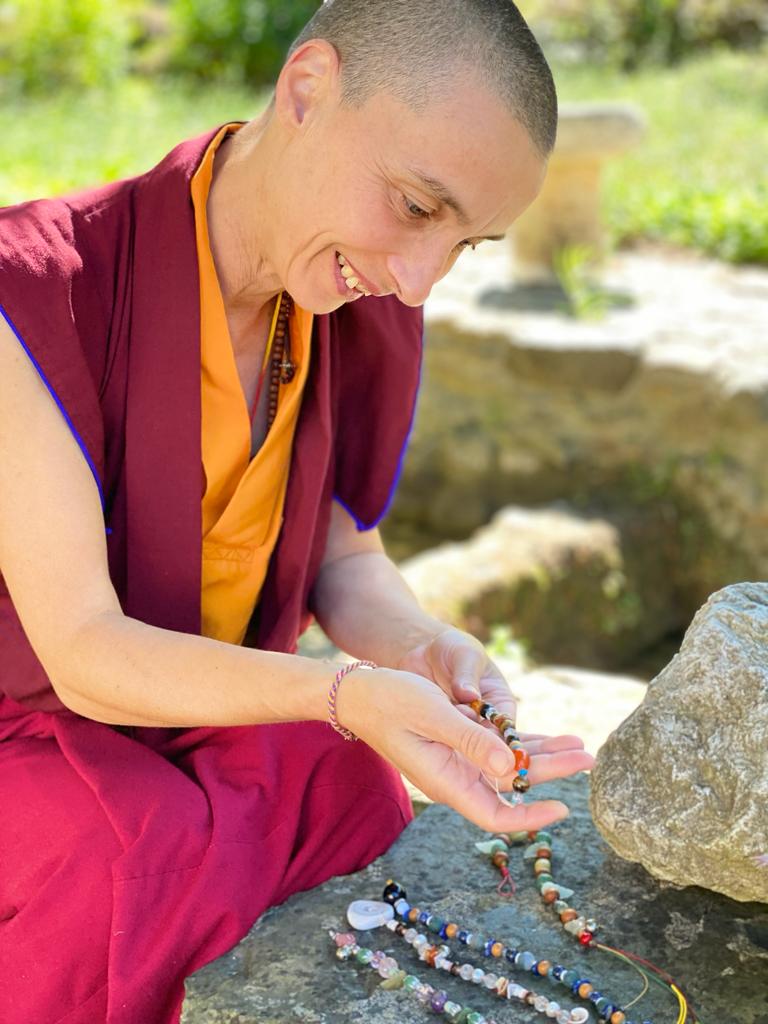
The history of micro-macramé!
- Yes, we love weaving, but it's not just a creative hobby. Where does this ancient art come from? What's the story behind the first knots and the first hands to start weaving? How did this art evolve and prosper?
Its origins date back to around 15,000 BC in China and Mesopotamia, and since then it has travelled through the centuries and continents, transforming and reinventing itself over time.
The word "macramé" comes from the Arabic "míqrama" (decorative fringe, embroidered veil), then from the Turkish "makreme" and the Italian "macramè".
In ancient times, sailors were expert knotters, using this technique for everything from nets to decorative ornaments on their ships. You could say they were the first to master the art of marine DIY! YAY!
In the 16th century, micro-macramé enjoyed a veritable renaissance in Europe, especially in Italy, where it was the first art form to be taught in schools. The art became highly prized by the royal courts and the aristocracy, with classes and models to be made! The first tutorials!
It was in the 60s that macramé reappeared and became the trendy creative hobby for our hippy friends! Clothes, lamps, hanging baskets... We tied knots everywhere, even on ourselves! For about thirty years, macramé became old school.
Today, macramé is much more than just a past trend, it's an art form in its own right. It's invading our interior design, our furniture, our hanging baskets... But also (and I know you've been waiting for this) for jewellery made with finer threads, aka... micro-macramé!
We don't need to introduce you to it any more! Thanks to this technique, we can adorn our wrists, our torsos, our hair, our ears, our ankles and much more - the possibilities are endless! Artists from all over the world are exploring this technique, creating unique pieces that combine tradition and modernity.


